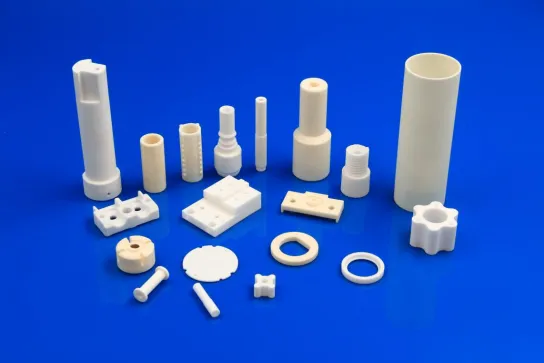Alumina Ceramic Laser Waveguides For CO2 lasers and excimer lasers
Innovacera introduces high-quality ceramic laser waveguides! Kindly note that we use state-of-the-art grinding equipment to create highly accurate grooves and complex internal structures for CO2 waveguides. At the same time, maintaining precise dimensional tolerances is critical to ensure that the apertures can properly guide the photon beam and ensure a tight seal with the gas medium. Our custom waveguides provide superior performance, reliability, and exceptional durability and efficiency, ideal for a wide range of laser applications.
CO2 lasers were one of the first gas lasers developed and remain one of the most powerful and efficient lasers to date, with an output power to pump power ratio of up to 20%. CO2 lasers produce beams in the infrared and microwave bands (wavelengths of 9.4 to 10.6 µm), and lasers with high enough power can melt or ablate a wide range of materials they are focused on.

Carbon dioxide (CO2) lasers typically use a pump cavity made of alumina ceramics. In a CO2 laser, the pump cavity is called a waveguide. The waveguide directs the photons into a coherent beam, so the waveguide must be very straight and properly aligned. The inner cavity of the waveguide contains a gas mixture that is excited by RF energy to produce a plasma that emits photons. Alumina ceramics are well suited for this application because they exhibit excellent optical properties at a wavelength of 10.6 µm and are mechanically strong enough to withstand operating temperatures in excess of 1000°C.
In recent years, new waveguide designs have significantly improved the performance-to-size ratio of CO2 laser engines (see figure below). For example, a “folded” waveguide design in the shape of the letter “Z” produces the same output as a conventional straight channel while taking up only one-third of the space. The overall size of the entire laser engine, including the cooling system, is also reduced accordingly. Another advantt design is that it dissipates heat efficiently, allowing the laser to be air- or liquid-coage of this compacoled.

Alumina Laser Waveguides Components Properties
-Low dielectric loss
-Consistent dielectric constant
-High density, vacuum tight
-Good thermal conductivity
-Dimensional and electrical stability at all operating temperatures
-High chemical resistance
Experience our high-quality ceramic laser waveguides and trust our company’s expertise to provide you with the best solution for your laser system. Contact us today to learn more about our products and customize waveguides to your unique specifications.

























 Enquiry
Enquiry